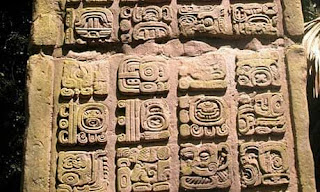BOOK REVIEW - ANDREW ROBINSON's The Indus
The Indus civilization is an enigmatic topic in itself.
This book is a comprehensive masterpiece on the topic. It is extensive in its approach and has all it takes to be studied in schools and universities.
The author thoughtfully discusses the various theories and debates surrounding the Indus civilization , language, art, culture and eventual decline.
Archaeology is like solving a jigsaw puzzle. The archaeologists have to perform a daunting task of arranging the puzzling pieces in an order that can make sense.
The author mentions that the decipherment of Mayan script took around 100 years. We can imagine how painstaking it is to decipher an unknown script.
Apart from presenting how the ruins of the Indus civilization were discovered in the 1920s by British and Indian archaeologists, the author delves deeper into talking about architecture, planning, agricultural practices, drainage system, artistic excellence, craft ranging from intricate pottery to jewelry designs.
Most mesmerizing aspect presented by the the author is on the extensive trade network of the Indus people who traded with contemporary civilizations of the time like that of Mesopotamia and Egypt.
Therein, he discusses social structure, politics and religion.
As we all know, the Indus civilization appears quite mysterious because of the fact that as much as the Indus script is undeciphered, the civilization once being flourishing and interacting with the rest of the world, completey vanished and that part has been hard to explain.
The book explores various telltale signs that provide insights into the civilization as that of a classless civilization where all people were equal in status as opposed to the past we know of and the present time.
The author gently reprimands the ways archeological work has been done and how the theme has been shifted too many times to use it for political agendas and gains. He highlights that many important aspects are still mired in controversy. He staunchly emphasizes the need to distinguish facts from fiction.
He carefully notes that while there are intriguing parallels, the direct connection between the Indus civilization and Hinduism remains speculative and contentious.
While he agrees on several discoveries by many archaeologists about the connection between the two, he does not shy away from discussing the possibility that the analogies might be assumptions rather than established facts. The undeciphered Indus script itself poses this hurdle in charting out a direct link and conclusion.
He cautions that without the ability to read the inscriptions, it's difficult to know with certainty what the symbols and signs meant to the Indus people. He goes on to emphasize that interpretations of these symbols are speculative and that they should be treated with caution.
For example, the "Pashupati Seal" is interpreted by some as an early representation of Shiva, but Robinson points out that this is just one possible interpretation. The figure could represent a completely different deity or concept unknown to later Hindu traditions.
I find his balanced approach encouraging and full of wisdom. He commends the readers to appreciate the possibilities while acknowledging the limitations of the evidence.
Finally, kudos to the publisher for printing the book in beautiful glossy thick pages. It was a delight to read this amazing book on these amazingly bound pages.









Comments
Post a Comment